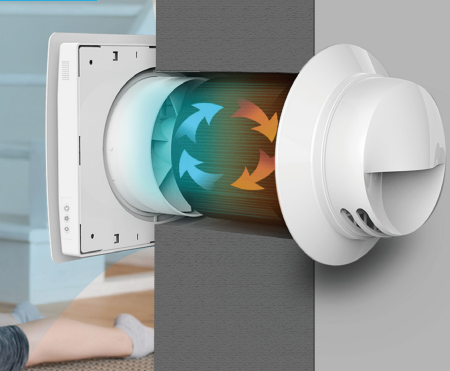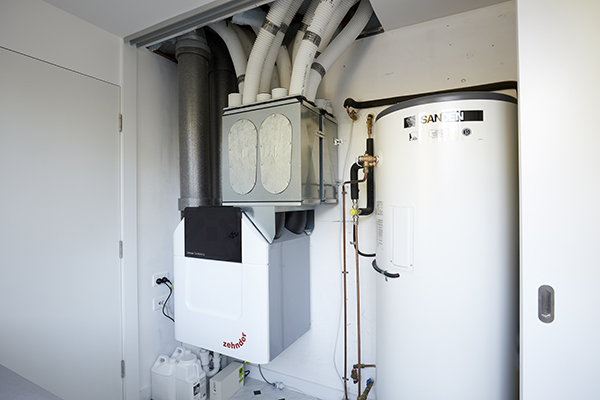The All-Inclusive Guide to the Uses of Heat Recovery Ventilation in Modern Structures
Heat Recovery Ventilation (HRV) systems stand for a significant improvement in developing technology (HRV Heat Recovery Ventilation). They give a technique for exchanging stale indoor air with fresh outdoor air while decreasing power loss. This technique not just enhances indoor air high quality however likewise contributes to power efficiency in both household and industrial buildings. Understanding the different applications and benefits of HRV can reveal its crucial function in modern-day design and sustainability initiatives. The ramifications of this modern technology deserve discovering better
Recognizing Heat Recovery Ventilation Equipments

Many modern-day structures focus on energy efficiency, understanding warmth recovery ventilation (HRV) systems is vital for enhancing indoor air quality and reducing power usage. HRV systems work by transferring warmth from stagnant indoor air to inbound fresh air, properly maintaining comfy indoor temperature levels while minimizing energy loss. These systems consist of a heat exchanger, followers, and ductwork that assist in the flow of air. Throughout winter months, HRV systems record and reuse warmth from the outbound air, while in summer, they can aid cool down inbound air. By constantly exchanging air, HRV systems likewise lower moisture and the concentration of indoor pollutants. Proper setup and upkeep of HRV systems are crucial for their effectiveness and performance in improving general structure efficiency and comfort.
Benefits of Heat Recovery Ventilation
Heat recovery ventilation systems offer countless benefits that improve both energy performance and indoor air top quality in contemporary buildings. By catching and recycling energy from exhaust air, these systems significantly decrease cooling and heating expenses, resulting in reduced power usage. Furthermore, they preserve a stable flow of fresh outdoor air, decreasing the risk of indoor air pollutants and irritants. This constant exchange aids regulate humidity degrees, protecting against mold development and making certain a much healthier living atmosphere. Additionally, HRV systems add to sustainability objectives by reducing general carbon footprints. Their ability to optimize ventilation without giving up thermal comfort makes them an important enhancement to modern building style, advertising both financial and ecological advantages.
Applications of HRV in Residential Buildings
As house owners increasingly focus on power performance and interior air high quality, the applications of warm recovery ventilation (HRV) systems in domestic buildings have ended up being more widespread. HRV systems are specifically advantageous in snugly secured homes, where keeping fresh air circulation is essential for protecting against dampness buildup and indoor toxins. They successfully transfer warmth from outgoing stagnant air to incoming fresh air, minimizing power prices related to heating & cooling. Furthermore, HRVs can enhance comfort degrees by regulating moisture and temperature level. They are likewise versatile for different domestic designs, consisting of single-family homes and multi-unit buildings. Generally, incorporating HRV systems sustains lasting living practices while guaranteeing a healthier interior atmosphere for residents.
HRV in Business and Industrial Settings
In business and industrial settings, the application of warmth recuperation ventilation (HRV) systems has become progressively important for enhancing power efficiency and maintaining air top quality. These systems properly transfer heat from exhaust air to inbound fresh air, minimizing the demand for extra heating or cooling. This not only reduces power expenses however likewise adds to sustainability campaigns. Industries such as production, warehousing, and office structures benefit significantly from HRV systems, as they assist control temperature and humidity levels, ensuring a comfy and efficient setting. Furthermore, HRV systems aid in removing impurities and excess dampness, boosting interior air top quality. As guidelines around air high quality end up being more stringent, the adoption of HRV modern technology is most likely to grow, making it a critical part of modern industrial and commercial infrastructure.
Future Patterns in Heat Recovery Ventilation Innovation

Often Asked Concerns
How Does Heat Recovery Ventilation Influence Indoor Air High Quality?
Heat recovery ventilation considerably enhances interior try this air top quality by constantly trading stagnant interior air with fresh outdoor air while recuperating energy. This procedure minimizes contaminants, preserves excellent moisture degrees, and guarantees a much healthier atmosphere for passengers.
Can HRV Systems Be Mounted in Existing Structures?
HRV systems can indeed be set up in existing buildings. Retrofitting might need modifications to ductwork and air flow layouts, yet it significantly enhances energy efficiency and interior air top quality, making it a sensible option for older frameworks.
What Maintenance Is Needed for HRV Equipments?

Exist Certain Climates Where HRV Is Much More Effective?
Heat recovery ventilation systems are particularly reliable in environments with significant temperature level differences between seasons. These systems enhance energy performance by recuperating warmth from exhaust air, making them suitable for both chilly and moderately cozy settings.
Just How Do HRV Solutions Affect Power Bills?
